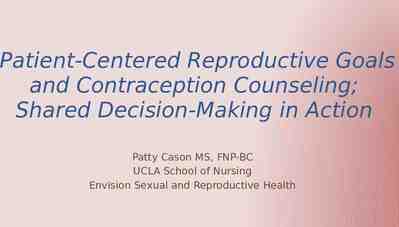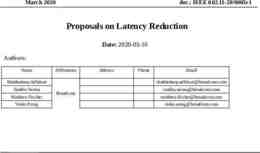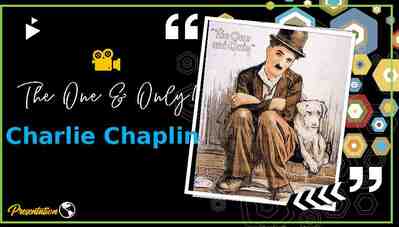Making Yourself Smart Enough For Medical School [Adapted for
41 Slides2.07 MB

Making Yourself Smart Enough For Medical School [Adapted for Zoom Screen Shots] John Pelley, PhD, MBA Dept of Medical Education, TTUHSC SOM AOA Distinguished Professor Former Dean of Admissions, Dean of Academic Affairs Google John Pelley SuccessTypes

This isn’t just about grades NEJM op-ed, Dr. David Muller, dean of medical education, Icahn School of Medicine at Mount Sinai, New York “[I] couldn't imagine what it must have felt like to be introduced to medical school with a suicide.” Background: MS4 committed suicide in August, 2016. – Ongoing problem in medicine throughout career 02/04/2023 2

"From their very first shadowing experience to their first foray in the lab; from high school advanced-placement courses and college admissions tests to grade point averages and the Medical College Admissions Test (MCAT); with helicopter parents, peer pressure, violins and varsity soccer, college rankings, medical school rankings, medical licensing exams and the residency Match, we never let up on them — and it’s killing them. 02/04/2023 3

02/04/2023 4

02/04/2023 5

02/04/2023 6

02/04/2023 7

02/04/2023 8

02/04/2023 9

[Brief Tour of Website with screenshots] 02/04/2023 10

Transactional Analysis Ego States (Eric Berne) Parent mode telling, requiring threat/coercion reward/approval Adult mode mutual responsibilities consequences/outcomes developmental/adaptive Child mode obeying, compliant, dependent 11

Ego States In Medical Education Faculty Student Parent Parent D A Adult B Adult C Child Child 12

Mindsets Affect You Forever Common belief, but not supported by evidence If you are smart enough, and you work hard enough, you can succeed. In addition, the secret to success is finding the right “system” or “method” for you. Self-actualization: evidence-based Thinking better leads to learning better. Learning better leads to performing better. 02/04/2023 13

What is Learning? Let’s find out your current understanding 1. 2. 3. 4. 02/04/2023 What is the evidence of learning? How do you know it happened? When do you learn? What changes in your brain when you learn? 14

Exercise Turn to a neighbor and answer – (1 min) When do you feel smart? When you are learning (doing homework) Or, When you are flawless (100 on an exam) 02/04/2023 15

Translation Of “Feeling Smart” Growth Mindset – “When you are learning.” – “You can always change how intelligent you are.” Fixed mindset – “When you are flawless.” – “You have a certain amount of intelligence and you can’t change it.” 02/04/2023 16

Mindset Comparison Fixed Mindset Success based on innate ability Failure is dreaded, feared. Least likely to succeed 02/04/2023 Growth Mindset Success based on understanding learning Failure is a challenge to adapt. Most likely to succeed 17

Exercise Talk for a minute with your neighbor about what your preference might be: – Think better “out-loud at first” – Think better “quietly at first” Try to give an example 02/04/2023 18

Extraversion vs. Introversion How do you do your best thinking? Extraverts think best by “talking it out.” – Ready-fire-aim! Introverts think best by “thinking it through.” – Ready-aim-aim! Everyone does both, but only one is preferred. – Use of opposite is conscious 02/04/2023 19

Myers-Briggs Personality Type – What It Is Normal differences between people Persistent tendencies (choices) – Do not change once established – e.g. Folding your arms, throwing a ball, writing your name Comfort zone for thinking; requires less effort than the opposite – Use of opposite is a conscious effort 02/04/2023 20

Myers-Briggs Personality Type – What It Isn’t Not a measure of intelligence Not a “limitation” No negative aspects; no psychopathology 02/04/2023 21

What Do Those Letters Mean? Four dimensions of preferences Extraversion (E) vs. Introversion (I)* Sensing (S) vs. Intuition (N)* Thinking (T)* vs. Feeling (F) Judging (J) vs. Perceiving (P)* *Pelley’s type 02/04/2023 22

Consult Your Colleague Talk for a minute with your neighbor about what your preference might be: – Think better with “details and specifics” – Think better with “big picture and connections” Try to give an example 02/04/2023 23

Sensing (S) vs. Intuition (N) What information do you give the most attention to? Sensing types give their attention to specifics Intuitive types give their attention to the big picture Everyone does both, but only one is preferred. – Use of opposite is conscious 02/04/2023 24

Linear vs. Integrative Learning Both linear and integrative learning are important – Sensing type: more linear – Intuitive type: more integrative 02/04/2023 25

Test Taking Style S style – Seek answer that matches memorized knowledge – Re-read question to stimulate recall – Memorization learning requires recognition N style – Rule out answer choices based on fit to big picture – Don’t fit pattern – Big picture learning establishes patterns 02/04/2023 26

Worst Possible Advice Find your learning style and use it. Next worse advice: Your learning style is either auditory, visual, tactile/kinesthetic, or analytical. We will cover the only acceptable advice after considering brain function 02/04/2023 27

Thinking (T) vs. Feeling (F) How do you react to new information? Thinking types consider the logical implications. Feeling types consider the impact on people. Everyone does both, but only one is preferred. – Use of opposite is conscious 02/04/2023 28

Judging (J) vs. Perceiving (P) How do you manage your life? Judging types prefer to be planned, organized (joy of closure). Perceiving types prefer to be flexible, adaptive (joy of discovery). Everyone does both, but only one is preferred. – Use of opposite is conscious 02/04/2023 29

Overview: Sense Integrate Act 02/04/2023 30

Can You Find The Sittin’ And Readin’ Dendritic Tree? Sittin’ and readin’ Complete learning cycle; plus 7.5hrs sleep (minimum, 5 REM cycles) Control left, LTP sensitized right Tree of long-term potentiated cells markedly increased (hippocampus “rehearsal”). Dendritic trees “processing power.” 02/04/2023 31

02/04/2023 32

Anatomy Of A Concept Map Key terms enclosed in “bubbles” Facts represented by two connected bubbles Connections contain propositions; describe concept relationship Branches represent groupings and organization Cross-links represent comparisons and cause-and-effect; integrative thinking 02/04/2023 33

02/04/2023 34

Concept Mapping – Why Visual organization of relationships – Visual structure aids long term memory – “The magic isn’t in the map ” Active learning: requires decisions based on – Inspection – making a list – Identification – finding terms that group – Understanding – finding how things compare 02/04/2023 35

Concept Mapping – Why Sensing types can learn intuitive type skills – Discovery of patterns; relationships – Improved “ruling-out thinking” Intuitive types can learn sensing type skills – Recall of facts not in big picture – Improved time on task Helps change the brain for Ss and Ns 02/04/2023 36

Steps In Question Analysis Understanding the correct answer. – How you needed to study to rule-in the correct answer Understanding the wrong answers. – How you needed to study to rule-out the wrong answers – Rephrasing the question 02/04/2023 37

Question Analysis Advantages Shows how are topics tested Shows how you have to think – (see “Chapter 8” in SuccessTypes book at SuccessTypes website) 02/04/2023 38

1. 20 year old woman presents to your clinic complaining of fever of 100 F for the past 2 days along with a sore throat. She has a cough and runny nose as well. On exam, she has a temperature of 99.9 F. Her tonsils are very swollen and very red, but there is no exudate (pus). She has tender, swollen lymph nodes under both sides of her jaw. Choose the correct statement below. A. The most likely diagnosis is Strep Throat due to the high fever. B. The most likely diagnosis is Allergic Sore Throat. C. You should absolutely prescribe Penicillin (antibiotic) to treat her infection D. The most likely diagnosis is a Viral Sore Throat. E. You should tell her that she probably has both a Viral infection and a Bacterial infection.

2. The correct sequence of blood flow through the heart and associated blood vessels is: A. Vena Cava - Left Atrium - Left Ventricle - Pulmonary Artery B. Right Atrium - Right Ventricle - Pulmonary Artery Pulmonary Veins C. Left Ventricle - Aorta - Right Ventricle - Pulmonary Artery D. Pulmonary Artery - Pulmonary Veins - Right Atrium - Right Ventricle







